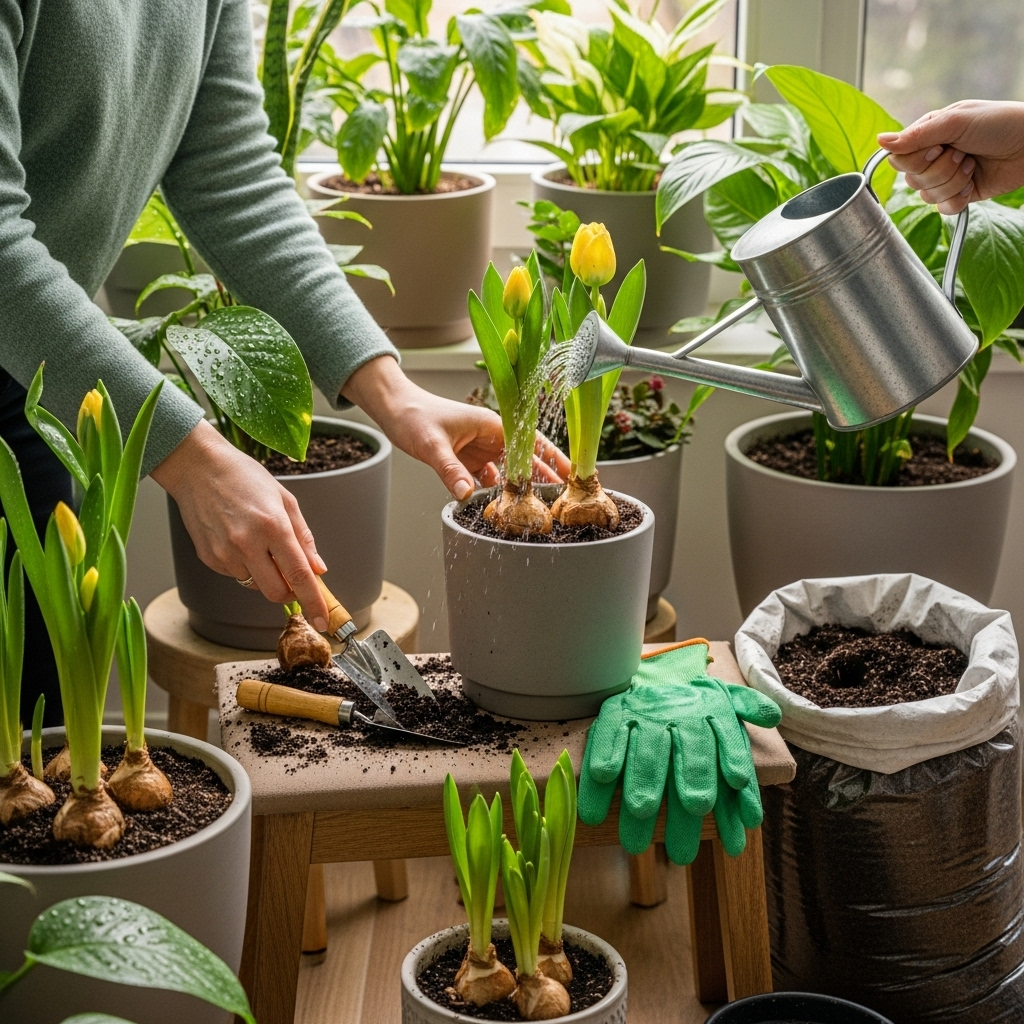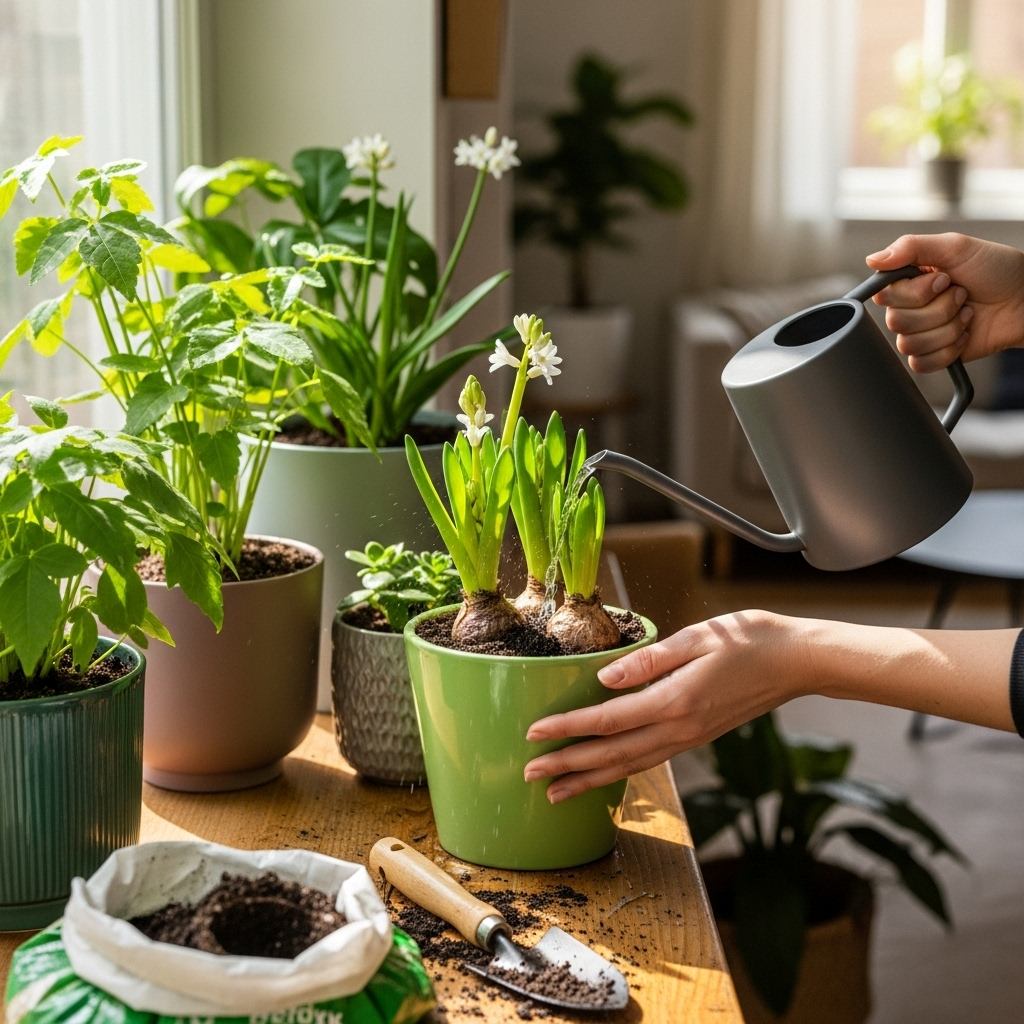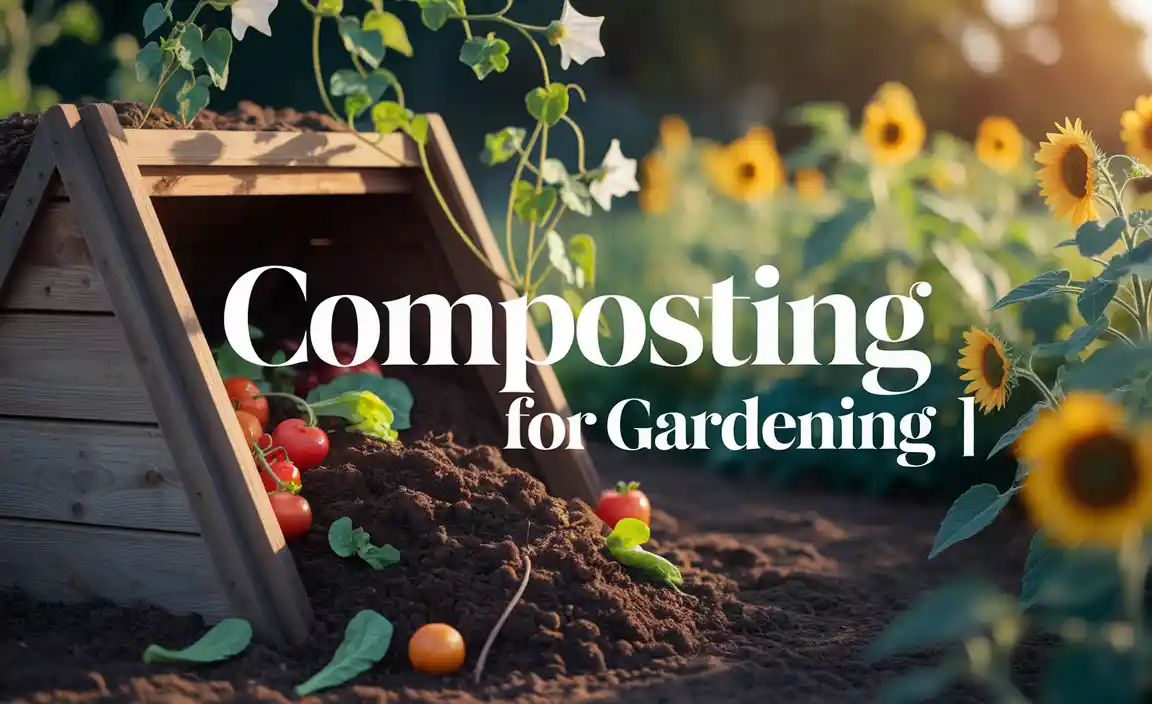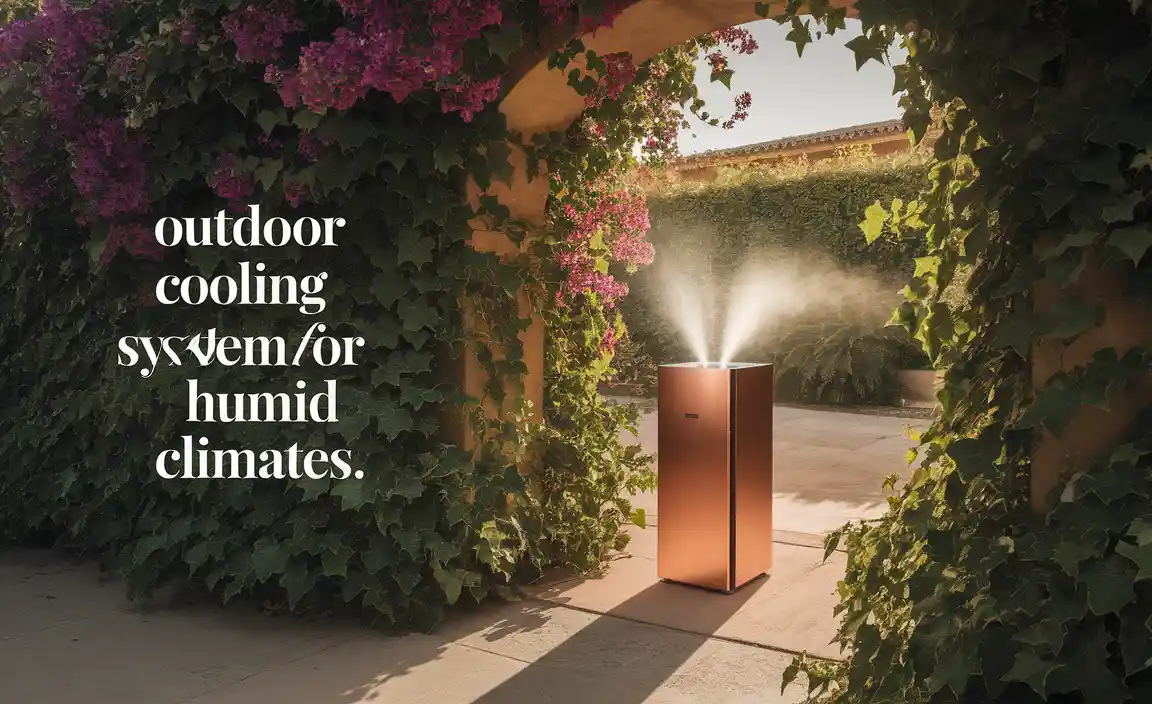Quick Summary:
Watering bulbs for indoor plants are a fantastic, low-maintenance way to keep your green friends perfectly hydrated throughout the year. These innovative tools release water gradually as your plant’s soil dries out, preventing both over and under-watering for effortless, thriving growth.
Hello there, fellow plant lovers! Are you ever puzzled about just how often to water your indoor plants? It’s a common worry that can lead to sad, droopy leaves or, worse, the dreaded root rot. But what if there was a super simple way to take the guesswork out of watering? Imagine your plants looking lush and vibrant, all with much less fuss. Well, get ready, because today we’re diving into the wonderful world of watering bulbs for indoor plants. They’re like a personal plant spa assistant, ensuring your leafy pals get just the right amount of hydration exactly when they need it. We’ll walk through everything you need to know to get started, making plant parenthood easier and more joyful. Let’s get those plants growing beautifully together!
Watering Bulbs for Indoor Plants: Your Secret to Effortless Growth
As a gardener, I know that one of the trickiest parts of keeping indoor plants happy is getting the watering just right. Too much water can drown those precious roots, while too little leaves them gasping for a drink. It’s a balancing act that can feel overwhelming, especially when life gets busy. That’s where watering bulbs come in! These charming little gadgets are more than just pretty accessories; they are ingenious tools designed to make plant care incredibly simple and effective. They act as a self-watering system, elegantly delivering moisture to your plants as they need it, promoting healthy root development and lush foliage. Forget the daily checks and the constant worry – watering bulbs can revolutionize your indoor jungle!
What Exactly Are Watering Bulbs?
Watering bulbs, also known as watering globes or self-watering globes, are decorative containers, usually made of glass, plastic, or ceramic, designed to hold water. They have a long, slender stem or tube that you insert directly into your plant’s soil. The magic happens through a process called capillary action. As the soil around the bulb’s stem dries out, it draws moisture from the water-filled bulb, releasing it slowly and consistently. This means your plant gets a steady supply of hydration without the risk of over-saturation. Think of them as a tiny, smart reservoir for your plant’s thirst!
Types of Watering Bulbs
While the core function of all watering bulbs is the same – slow-release hydration – they come in a delightful variety of styles and materials to suit different aesthetics and plant needs:
- Glass Watering Bulbs: These are perhaps the most common and visually appealing. They come in various shapes, sizes, and colors, often with decorative accents. They’re fantastic for showcasing the water level and adding a touch of elegance to your pots.
- Plastic Watering Bulbs: A more durable and often budget-friendly option. They are less likely to break and can be found in many fun designs, sometimes mimicking natural elements like leaves or dew drops.
- Ceramic Watering Bulbs: These offer a more rustic or earthy feel. The porous nature of some ceramics can contribute to the slow release of water, though they usually function similarly to glass or plastic ones.
- Novelty Watering Bulbs: You can find watering bulbs shaped like animals, mushrooms, birds, and all sorts of whimsical designs. These are great for adding personality to your plants, especially in children’s rooms or as unique gifts.
- Larger Capacity Watering Globes: For bigger plants or those who tend to be thirsty, there are larger watering globes available that hold more water, reducing the frequency of refills.
Why Use Watering Bulbs for Your Indoor Plants? The Benefits
Switching to watering bulbs can bring a host of advantages for both you and your plants. Let’s explore some of the wonderful reasons to give them a try:
-
Prevents Over- and Under-Watering: This is the main superpower of watering bulbs. They deliver water only when the soil is dry enough to absorb it, eliminating the risk of drowning roots or letting the plant wilt from dehydration. This consistent moisture level is crucial for healthy plant development.
-
Reduces Watering Frequency: Depending on the size of the bulb and your plant’s needs, watering bulbs can keep your plants hydrated for days, or even weeks, at a time. This is a lifesaver for busy individuals, frequent travelers, or anyone who simply forgets to water on a regular schedule.
-
Promotes Healthy Root Growth: Consistent, even moisture encourages plant roots to grow deeper and stronger, seeking out the water source. This leads to more robust, resilient plants.
-
Adds Aesthetic Appeal: Many watering bulbs are beautifully designed. They act as decorative elements, adding color, texture, and a touch of artistry to your plant arrangements.
-
Ideal for Vacation Care: Going away for a weekend or a short vacation? Watering bulbs can provide peace of mind, ensuring your plants remain hydrated while you’re enjoying your time off.
-
Great for Beginners: If you’re new to the plant world, watering bulbs can significantly simplify your learning curve. They offer a forgiving way to care for plants, building your confidence as a plant parent.
-
Water Conservation: By releasing water directly into the soil as needed, there’s less evaporation compared to surface watering, making them an efficient way to use water.
How to Use Watering Bulbs: A Step-by-Step Guide

Using watering bulbs is delightfully simple. It’s a straightforward process that anyone can master. Ready to give your plants the gift of consistent hydration? Let’s get started:
Step 1: Choose the Right Watering Bulb
Before you can start watering, you need a watering bulb! Consider the size of your plant’s pot and the plant’s typical water needs. Smaller bulbs are great for smaller pots and less thirsty plants, while larger ones are better suited for bigger containers or plants that drink a lot. Think about the style that will best complement your plant and home decor. Many lovely options are available at local garden centers or online retailers.
Step 2: Prepare Your Watering Bulb
Most watering bulbs are ready to go right out of the box. For glass or plastic bulbs, simply rinse them with water. If you’ve purchased a ceramic bulb, you might want to check the manufacturer’s instructions, as some might benefit from a brief soak to ensure they don’t clog too quickly, though this is rare.
Step 3: Fill Your Watering Bulb
This is as simple as it sounds! Fill the bulb with fresh, room-temperature water. You can use a watering can or even just a tap. For decorative glass bulbs, filling them fully is part of the visual appeal. For most bulbs, you’ll fill them up through the long, slender stem.
Step 4: Gently Insert the Stem into the Soil
This is arguably the most crucial step in the process. You want to insert the stem into the soil next to your plant’s main stem, ensuring it goes deep enough to reach the root zone. Here’s how to do it carefully:
- Moisten the Soil First: It’s best to slightly moisten the soil before inserting the bulb. This makes it easier to push the stem in without causing too much soil disturbance or damaging roots. Water your plant lightly as you normally would.
- Create a Small Hole: You can use your finger or a pencil to gently make a small pilot hole in the soil where you want to place the bulb’s stem.
- Insert Slowly and Steadily: Hold the bulb by its decorative top and slowly push the stem into the pre-made hole. Don’t force it. If you feel significant resistance, stop, reposition slightly, and try again. Aim for a stable, upright position.
Tip: Avoid placing the bulb too close to the main stem of your plant to prevent potential rot issues on the base of the stem itself. Aim for a spot where you can feel the soil is moist but not waterlogged.
Step 5: Observe and Refill
Now, let your watering bulb do its magic! Over time, you’ll notice the water level in the bulb decreasing. This indicates that your plant is drawing water from the bulb as its soil dries out. When the bulb is nearly empty, it’s time to refill it. The frequency of refilling will depend on various factors, including the type of plant, the size of the bulb, the ambient temperature, and humidity levels in your home. For instance, a thirsty Fiddle Leaf Fig in a warm, sunny spot might deplete a bulb faster than a ZZ plant in a shadier corner.
A good rule of thumb for typical houseplants is that a watering globe might last anywhere from 3 to 14 days. You’ll quickly get a feel for how long yours lasts with your specific plants and environment.
Factors Affecting Watering Bulb Performance
While watering bulbs are wonderfully simple, a few factors can influence how effectively they work. Understanding these can help you troubleshoot or optimize their performance:
- Soil Type: Fast-draining potting mixes may cause water to be released quicker than denser, moisture-retentive soils.
- Plant Size and Thirst Level: Larger, thirstier plants will obviously draw water more quickly than smaller, drought-tolerant ones.
- Environmental Conditions: Warm, dry environments with lots of light will cause the soil to dry out faster, leading the bulb to release water more rapidly. Cooler, humid conditions will slow this process down.
- Bulb Size and Material: A larger bulb holds more water and will last longer. The porosity of certain materials (like some ceramics) might also play a minor role in release rate, though most function primarily through soil absorption.
- Stem Clogging: Occasionally, soil particles or mineral buildup can clog the stem. If you notice the bulb isn’t releasing water anymore, a gentle rinse or clearing the stem might be needed.
Troubleshooting Common Watering Bulb Issues

Most of the time, watering bulbs work like a charm. However, if you encounter hiccups, here are some common problems and their solutions:
| Problem | Possible Cause | Solution |
|---|---|---|
| Water not being released from the bulb. | The stem is clogged with soil or algae. | Carefully remove the bulb. Rinse the stem thoroughly. You can use a thin pipe cleaner or toothpick to gently clear any blockage. Reinsert. If algae is an issue, consider using distilled water or treating the bulb with a mild vinegar solution (rinse very well afterward). |
| Soil is too wet even with the bulb. | The soil is too dense and not allowing proper drainage or absorption. Plant is not thirsty enough. The bulb is too large for the plant/pot. | Ensure you are using a well-draining potting mix. Avoid overwatering from other sources. Consider removing the bulb temporarily if the soil remains consistently soggy. For very small plants in large pots, a smaller bulb might be more appropriate. |
| Bulb empties very quickly. | Plant is very thirsty. Environmental conditions are hot and dry. The soil drains very fast. | Refill the bulb as needed. Consider using larger watering bulbs if available. Ensure the environment isn’t excessively hot or dry for the plant. If the soil is the issue, consider amending it with more moisture-retentive materials. |
| Bulb falls over or doesn’t stay upright. | Soil is too loose. Stem not inserted deeply enough. | Gently firm the soil around the base of the bulb stem. Ensure the stem is inserted at least halfway into the soil’s depth for stability. |
When to Consider Alternatives to Watering Bulbs
Watering bulbs are fantastic for many situations, but they aren’t the only game in town. For instance, for very large specimen plants or specific watering needs, you might consider:
- Self-Watering Pots: These pots have a built-in reservoir at the bottom. They are excellent for maintaining consistent moisture levels, especially for plants like African Violets or Orchids. The Royal Horticultural Society offers great general advice on pot types and their suitability for different plants, which can guide your decisions.
- Watering Spikes: Similar to bulbs but often made of terracotta or ceramic, these porous materials slowly release water directly from a reservoir (which can be a bottle or a dedicated container placed next to the plant).
- Drip Irrigation Systems: For extensive indoor or outdoor plant collections, a small-scale drip irrigation system can automate watering efficiently.
- Moisture Meters: While not a watering method, these tools are invaluable for beginners to accurately check soil moisture levels before deciding if and how to water.
Ultimately, the best watering method depends on your plant, your environment, and your personal routine. Watering bulbs are a wonderful, accessible starting point.
Watering Bulbs for a Healthier Planet
Beyond the ease they bring to plant care, watering bulbs can align perfectly with an eco-conscious lifestyle. By promoting optimal hydration, they help plants thrive, reducing the likelihood of plants dying and needing replacement – a small but meaningful step in reducing waste. Furthermore, efficient watering like that provided by bulbs means less water is wasted through evaporation, conserving this precious resource. For those interested in learning more about sustainable gardening practices, resources like the EPA’s WaterSense program offer valuable insights into water conservation that can be applied even to indoor gardening.
Maintaining Your Watering Bulbs

To ensure your watering bulbs continue to function beautifully, a little maintenance goes a long way:
- Regular Rinsing: When refilling, give the bulb a quick rinse. This helps prevent mineral buildup or algae growth.
- Occasional Deep Clean: Every few months, or if you notice slow release, give your bulbs a more thorough cleaning. For glass or plastic, a mild soap and water solution or a rinse with a diluted vinegar solution works well. Rinse thoroughly afterwards.
- Check for Cracks or Damage: Inspect your bulbs periodically for any signs of damage, especially if they are made of glass. Damaged bulbs might leak or break.
- Store Properly: If you need to store bulbs for an extended period, ensure they are clean and completely dry to prevent mold or mildew.
By taking these simple steps, you’ll ensure your watering bulbs remain functional and attractive for seasons to come, continuing to support your plants’ effortless growth.
Frequently Asked Questions About Watering Bulbs
Q1: How often do I need to refill my watering bulbs?
A1: This varies greatly! Factors like bulb size, plant type, pot size, and environmental conditions (temperature, humidity) all play a role. A small bulb might last 3-5 days for a thirsty plant in a warm room, while a larger bulb could sustain a shade-loving plant for 2 weeks or more. Observing your plant and the water level in the bulb is the best way to gauge when it needs refilling.
Q2: Can I use fertilizer in my watering bulbs?
A2: It’s generally not recommended to add liquid fertilizer directly into watering bulbs. Fertilizers can clog the stem, encourage algae growth, and might release nutrients too quickly or unevenly, potentially harming your plant. It’s best to fertilize your plants separately using appropriate methods, like diluted liquid fertilizer in your regular watering or slow-release granules.
Q3: Do watering bulbs work for all indoor plants?
A3: Watering bulbs are very versatile and work well for a wide range of common indoor plants, especially those that prefer consistently moist (but not soggy) soil. They are particularly useful for plants like ferns, peace lilies, and many foliage plants. Extremely drought-tolerant plants (like succulents and cacti) or plants with very specific watering needs might be better suited to other methods, as they may not draw water from the bulb consistently.
Q4: What is the best soil type for using watering bulbs?
A4: Watering bulbs work best with standard, well-draining potting mixes. These soils allow for good capillary action, meaning the soil can effectively draw water from the bulb as it starts to dry. Very loose or gritty soils might drain too quickly, causing the bulb to empty rapidly. Very dense, heavy soils might not draw water effectively, leading to overly wet conditions around the bulb’s stem.
Q5: Can watering bulbs help prevent root rot?
A5: Yes, they can significantly help prevent root rot, which is often caused by overwatering. By providing a steady, controlled release of water only as the soil dries, watering bulbs help maintain an optimal moisture level, preventing the soil from becoming waterlogged and suffocating the plant’s roots.
Q6: What do I do if my watering bulb’s stem gets clogged



